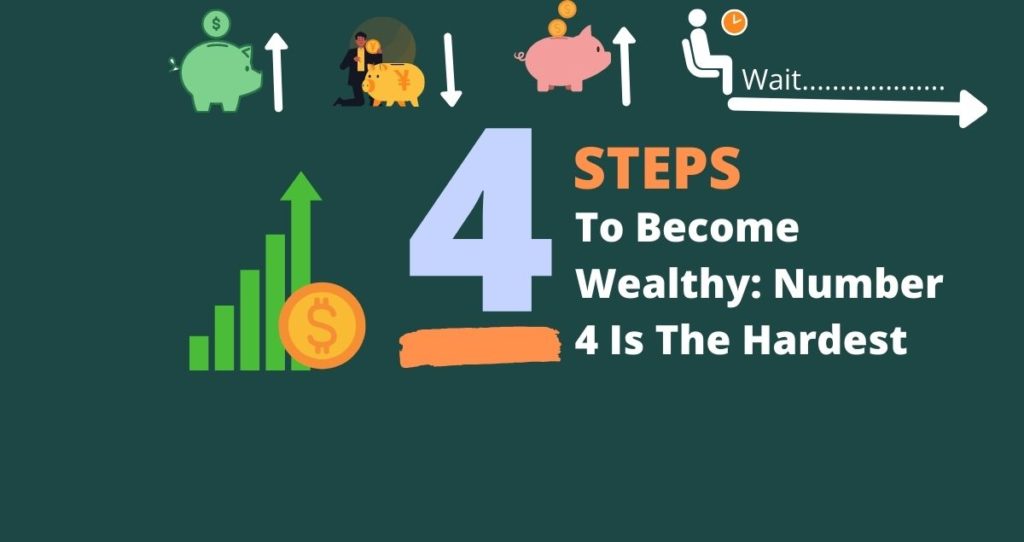Investing is the most rewarding and yet scary step you need to take to achieve your financial goals. You can start with a lot of money or less depending on your investment choices and goals. Maybe you want to retire fast, so, you are looking for ways to have your money work for you. Whatever your case is, there are proper steps you need to follow when deciding how much money you need to invest.

1. Set your goals
No matter how much money you make or have, you should start by setting up your goals. Your investment goals are unique to yourself as they reflect your future dreams and the kind of lifestyle you want to live. The following are some of the reasons people decide to invest or save money
- Travel
- Buy a house
- Get married
- Start a business
- Grow your kids’ education fund
- Cash flow
- Retire early
- And many more.
You can see that people have different reasons for investment. For example, if I want to retire earlier, I might need to invest more and heavily than someone who is growing their kids’ education fund. Therefore, having a clear understanding of your goals is very important in determining how much you should invest. Your goals should be specific, achievable, time-based, and relevant to your desired lifestyle. Once you figure out what your investment goals are, you will move to the next phase.
2.Create a spending account
This is one of the most tedious tasks for many people. But knowing how much money you make and how much you spend helps you paint a general picture of your financial situations. Your spending plan is a blueprint of how your money is spent every month. How do you calculate your monthly expenses? You need to know everything that costs you money every month. The following list can help you evaluate your expenses, income, and remaining value after all your expenses are paid.
a. List of all your bills

b. Calculate all your family income

c. Subtract your total expenses from your total income
3.Take care of other priorities before investing
Now you have money left in your pocket after paying all your expenses. However, it is not the time to start investing yet. You must take care of other important things or priorities in your life. The recommended list includes but not limited to:
- Paying off your credit card debts and other related debts
- Put money in an emergency fund (at least 6 months)
- Contribute to your retirement plan
- Your kids’ college fund, etc.
At this stage, you have taken care of all pressing matters and financial priorities. You have money left and you feel like you need to invest it somewhere. Should you invest all of it? This is a good question. There are other factors to consider before putting all your money into an investment of your choice.
4.Understand your risk profile
Your investment decision will be based on your risk profile. Your risk profile defines how much risk you are willing to take if the market goes against you. This means that any investment of your choice will be subjected to financial risks. For example, a stock you bought at $10 per share can go to $1 per share after a company files for bankruptcy. If you cannot take a lot of risks, it would be wise to invest less money, diversify your portfolio, and avoid highly volatile securities such as stocks.

The risk profile is different among individuals and you alone can decide how much risk you can handle. Would you be OK if your investment account loses 50% of its value? Once you know how much risk you can handle, you will be able to determine how much money you are willing to invest. Again, any amount can be invested. It could be 10, 100, 1000,100,000 dollars, or more.
5. How much passive income do you want?
From your goals, you have decided on your future lifestyle. You can now decide how much money you will need to satisfy that lifestyle. If you want to travel every month and your travel spending is $5000, you will need a cash flow that is higher than this amount. Once you know your desired cash flow, you can breakdown your investment of choice and see how much you will need to invest. Again, your cash flow must be realistic and achievable. Always remember that sustainable investment takes time and patience.
6.What time do you need to access your money?
This is an important factor in your investment decisions. Depending on your investment goals, you could wait and access your investment after you retire or collect cash flows from your investments every month. This depends on your investment types. For example, a person who invested in high dividend stocks will have a different cash flow structure than a person who invested in rental properties. Diversifying your portfolio into different industries such as real estate, stocks, bonds can give you access to your cash flow for the short term and long term.
7.Sacrifice your current standard of living for better future
Investing is hard for many people not because it is too complicated to understand. Instead, it requires an individual to have a set of standards and stick with them no matter what happens to their personal lives or investment structures. If you choose an investing path, you will need to have rules and stick to them. For example, you will need to be frugal to raise money for your investment. In addition, will need a lot of discipline and avoid rush decisions when your investments are not performing as desired. Once you make peace with this condition, you are ready to move to the next phase.
8.Hire a financial adviser in your area (optional)
There are times when it will be difficult to determine how much you need to invest or where to invest it. If this is the case, you can hire a financial adviser in your area who can help you with your financial goals. The adviser can help you understand the markets you are in, requirements, initial starting capital in your desired area, etc. He/she can also help you assess your investment risks and rewards.
9.Save at least 10% of your income
Many financial advisers suggest saving at least 10% of your income. This money can be either saved in saving accounts or put into investment accounts that guarantee the principal. Of course, it is always better to put money into something that generates an income no matter how small. If you keep your money in a zero percent return saving account, you will lose your money through inflation. That is why you should consider putting your money into compounding interest accounts, 401k, etc. These types of investments are less volatile compared to stocks.

Bottom line
You can invest any amount no matter how small they are. It could be $10, $1000, 1M dollars, etc. However, for your investment to succeed, you must follow proper investing procedures. You must have discipline and rules that govern your investment decisions. Never invest more than you can afford to lose. The only bad investment you can make is to not invest at all.








